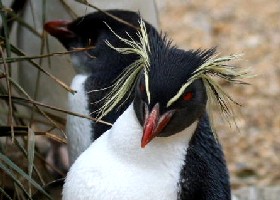Southern Rockhopper Penguin Eudyptes chrysocome
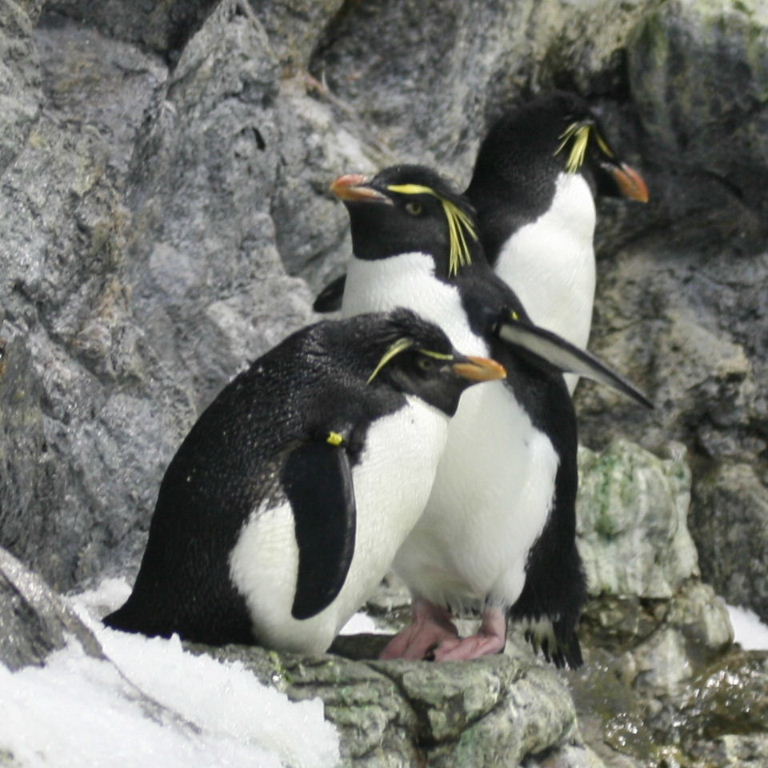
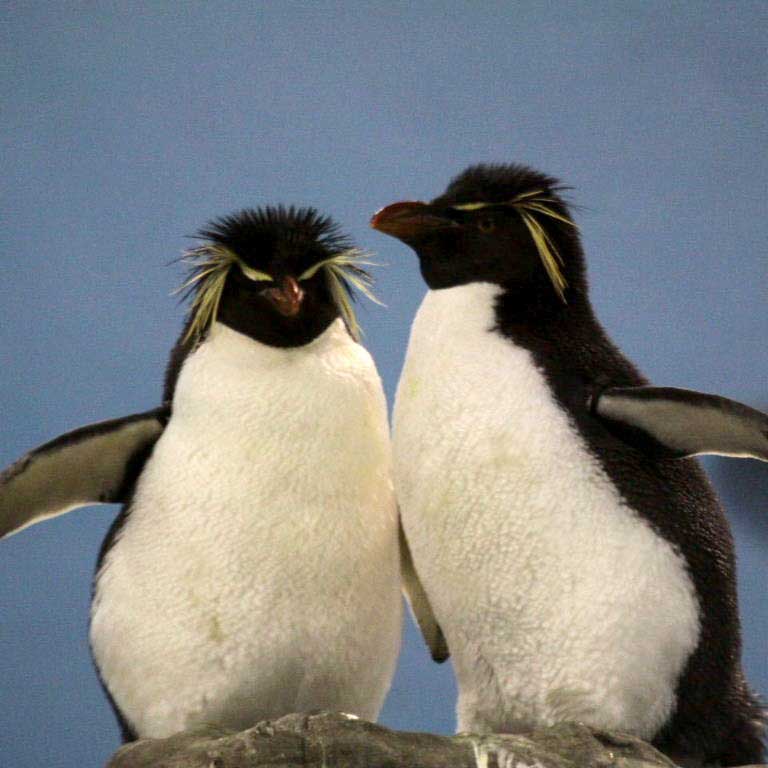
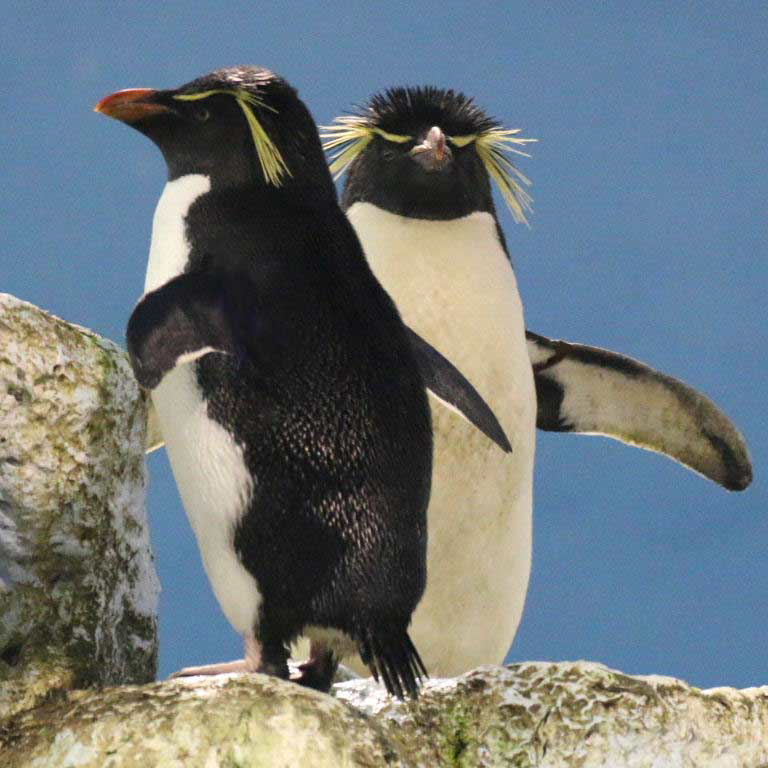
Rockhopper Penguins, with their comical streaks of blonde "hair", live on rocky southern coasts
of South America and on islands in the southern Atlantic, Pacific and Indian Oceans. In 1992, the Rockhopper
(E. chrysocome) was split into 3 subspecies, the Northern, the Southern and the Eastern.
In 2006, they were further split into two distinct full species, the larger Northern, (E. moseleyi)
of more temperate Atlantic and Indian Ocean islands and the smaller Southern (E. chrysocome)
of sub-Antarctic waters around Cape Horn and New Zealand, incorporating the Eastern subspecies.
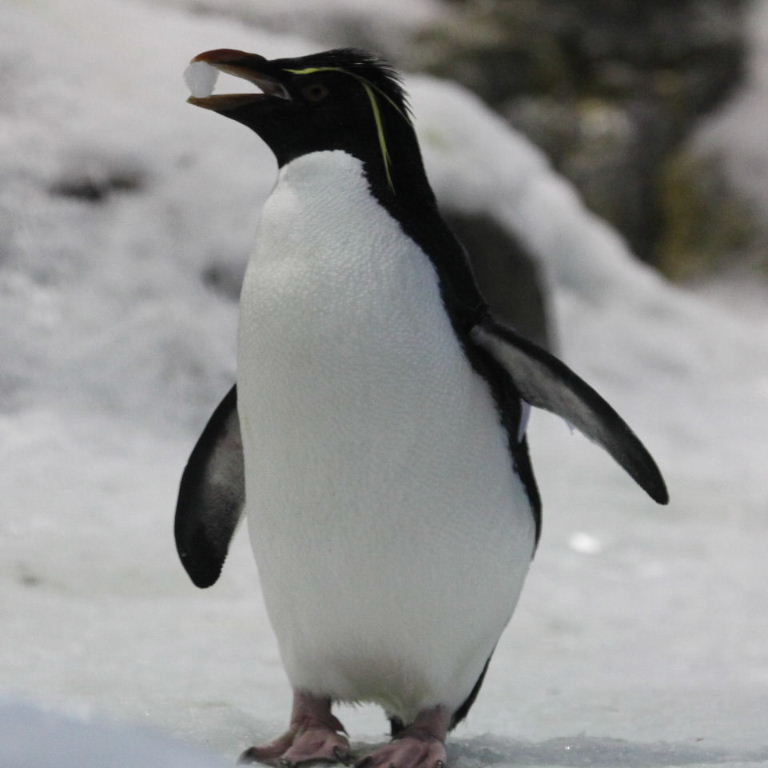 "Do you want ice with that?" The Southern has shorter yellow eyebrows and crests.
"Do you want ice with that?" The Southern has shorter yellow eyebrows and crests.
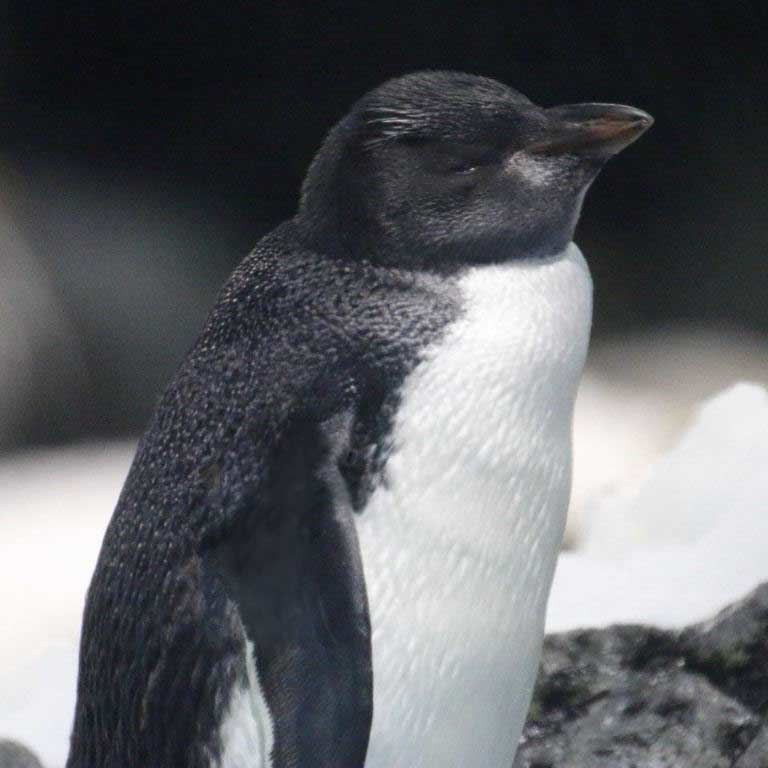 Juvenile Rockhoppers don't have the blonde locks.
Juvenile Rockhoppers don't have the blonde locks.
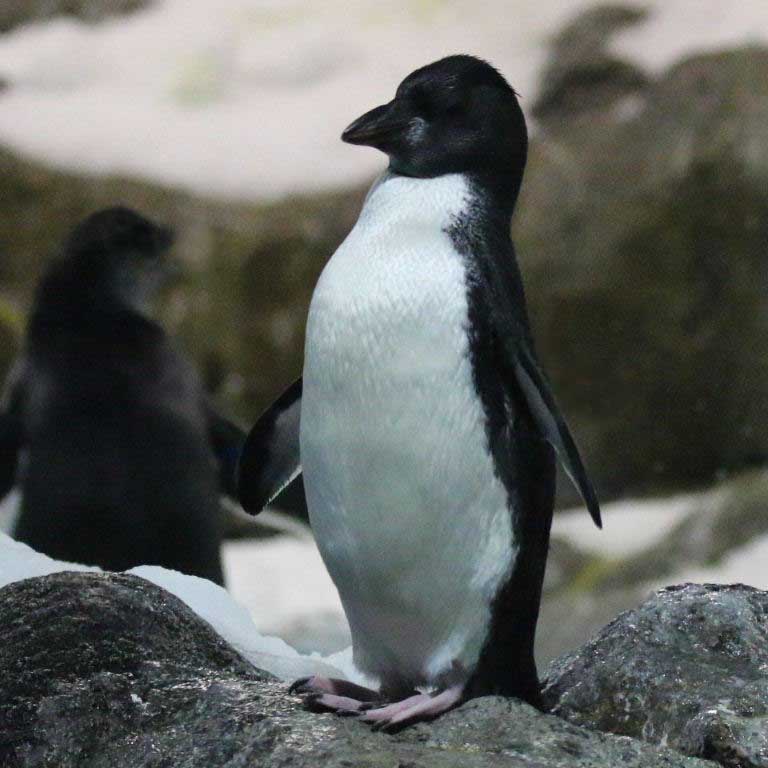 Initially they have black beaks and feet that turn red/pink later.
Initially they have black beaks and feet that turn red/pink later.
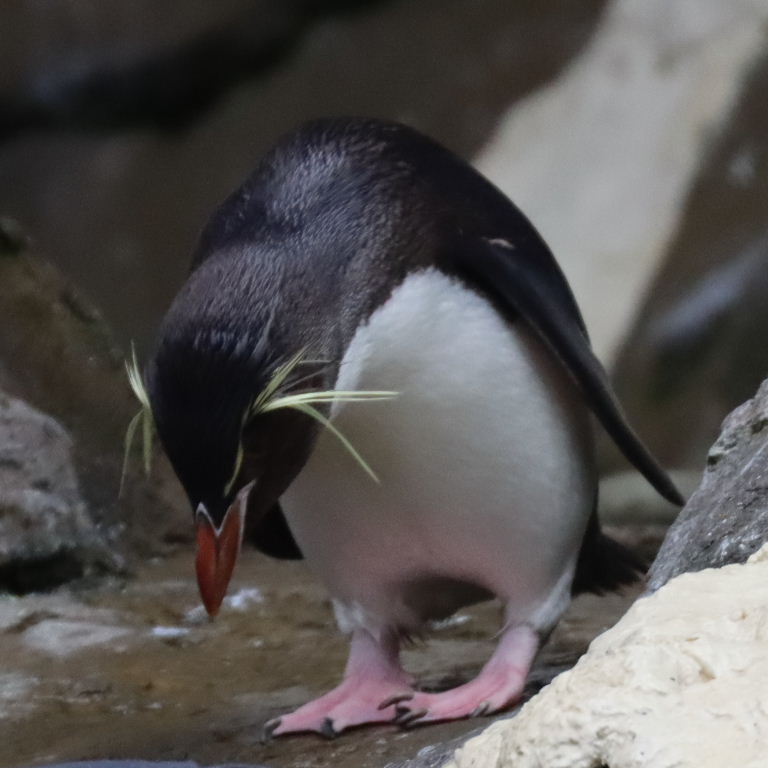
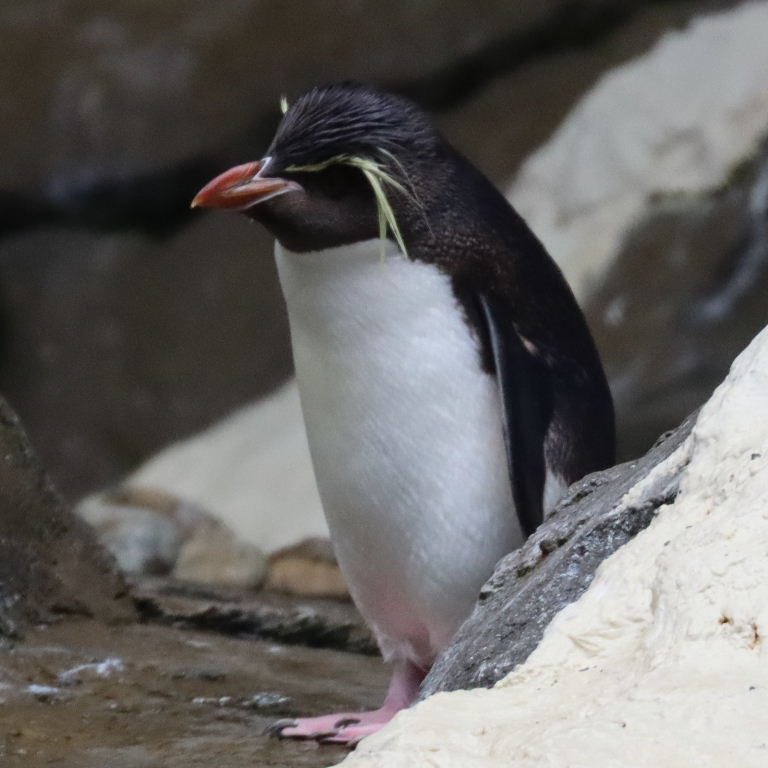
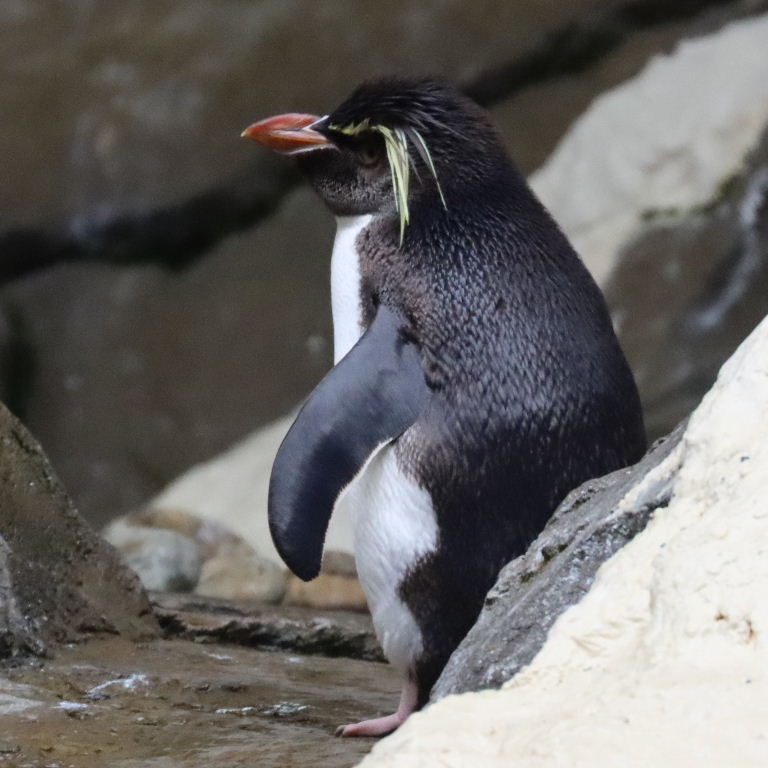
The Southern Rockhopper has two subspecies, the Western and the Eastern (genetically closer than the Northern full species).
The main difference is their distribution, the Western (E. c. chrysocome), around the southern tip of
South America and the Eastern in the far southern Indian Ocean and subantartic regions south of New Zealand. The latter,
(E. c. filholi), one of the samllest of the crested penguins and with distintive
pink margins around its bill, is shown in the row immediately above. Others on the page are the Western subspecies (without pink bill margins).
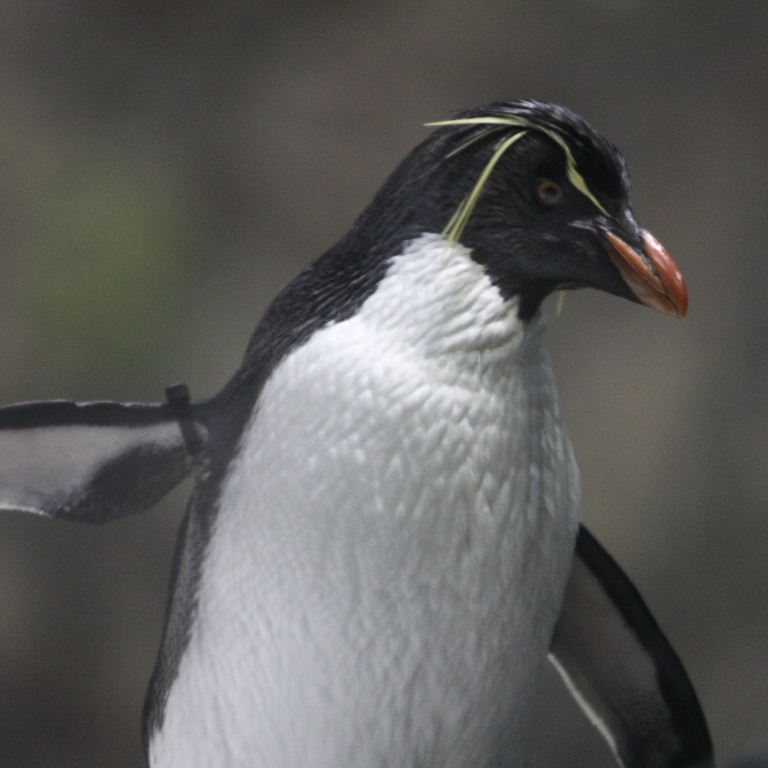
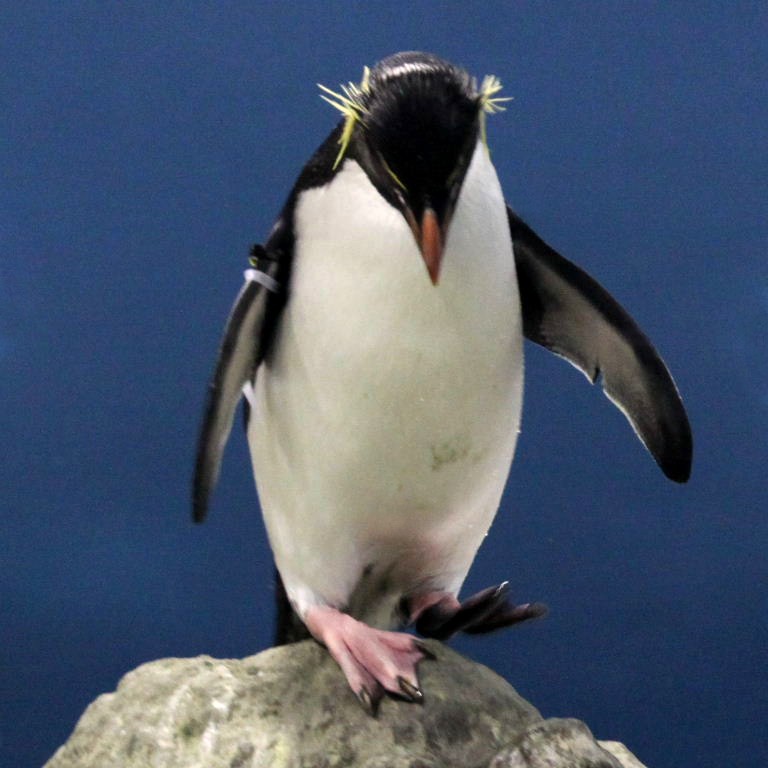
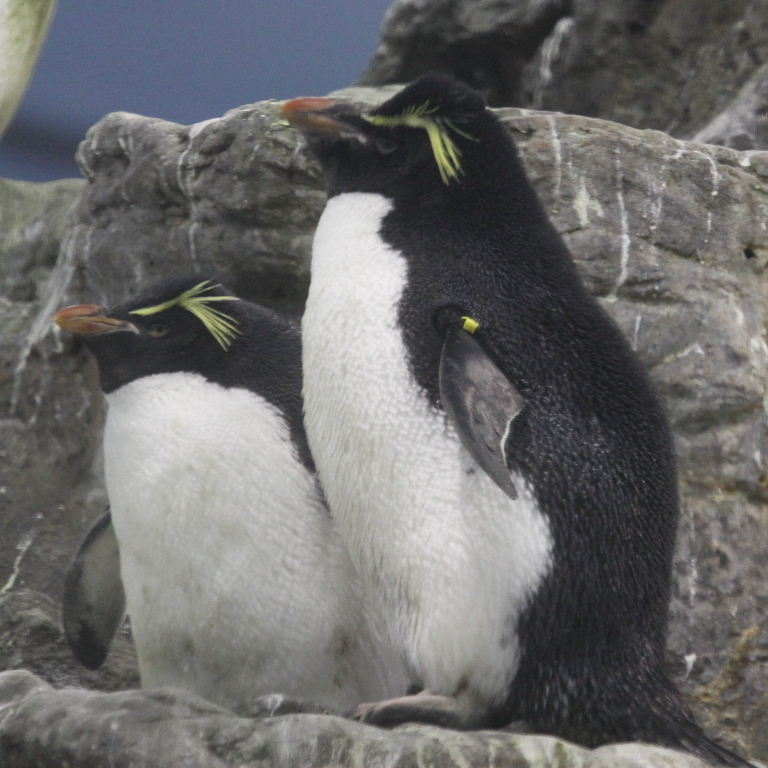
As their name indicates, they hop and jump well. The Southern Rockhopper is particularly vulnerable to
climate change, the adults having to go farther from nesting grounds to find food for chicks and finding food of lesser quality.
Populations, particularly of the Eastern subspecies, are rapidly declining.


